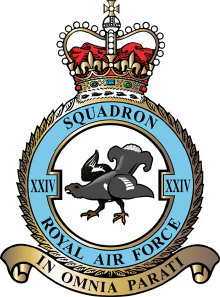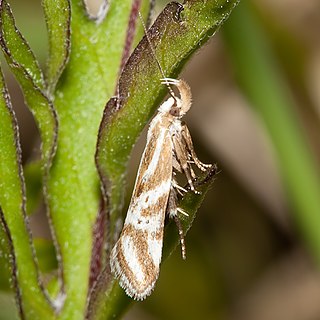
Lepidoptera or lepidopterans is an order of winged insects that includes butterflies and moths. About 180,000 species of the Lepidoptera have been described, representing 10% of the total described species of living organisms, making it the second largest insect order with 126 families and 46 superfamilies. and one of the most widespread and widely recognizable insect orders in the world.

Moths are a group of insects that includes all members of the order Lepidoptera that are not butterflies. They were previously classified as suborder Heterocera, but the group is paraphyletic with respect to butterflies and neither subordinate taxa are used in modern classifications. Moths make up the vast majority of the order. There are thought to be approximately 160,000 species of moth, many of which have yet to be described. Most species of moth are nocturnal, although there are also crepuscular and diurnal species.

George Vernon Hudson FRSNZ was a British-born New Zealand entomologist credited with proposing the modern daylight saving time. He was awarded the Hector Memorial Medal in 1923.

No. 24 Squadron (also known as No. XXIV Squadron) of the Royal Air Force is the Air Mobility Operational Conversion Unit (AM OCU). Based at RAF Brize Norton in Oxfordshire, 24 Squadron is responsible for aircrew training on A400M Atlas and C17 Globemaster. The squadron also delivers or oversees engineer training for these aircraft.
Sir George Francis Hampson, 10th Baronet was an English entomologist.

The Coleophoridae are a family of small moths, belonging to the huge superfamily Gelechioidea. Collectively known as case-bearers, casebearing moths or case moths, this family is represented on all continents, but the majority are found in temperate areas of the Northern Hemisphere. They are most common in the Palearctic, and rare in sub-Saharan Africa, South America, and Australia; consequently, they probably originated in northern Eurasia. They are relatively common in houses, they seek out moist areas to rest and procreate.

The de Havilland DH.60 Moth is a 1920s British two-seat touring and training aircraft that was developed into a series of aircraft by the de Havilland Aircraft Company.

Schinia, commonly called flower moths, is a large genus of moths belonging to the family Noctuidae. The genus has a Holarctic distribution with the vast majority of species being found in North America, many with a very restricted range and larval food plant.

Urodidae, whose species are commonly known as false burnet moths, is a family of moths in the lepidopteran order. It is the type genus in the superfamily, Urodoidea, with three genera, one of which, Wockia, occurs in Europe.

Heliodinidae, commonly known as sun moths, is a family of small moths with slender bodies and narrow wings. Members of this family are found in most parts of the world. Heliodinid moths are brightly coloured day-flying moths. The base of the haustellum is bare. The scales on the head are compact and appear like a shield. Many Heliodinidae raise their hindlegs when resting but this is not a taxonomic feature and several genera like Epicroesa and Lamprolophus do not show this posture. Many Heliodinidae have the inner and outer spurs of the metatibia subequal. The larval host plants of the majority of species are in the Aizoaceae, Chenopodiaceae, Phytolaccaceae, Portulacaceae and Nyctaginaceae, all in the Order Caryophyllales. A few feed on Onagraceae, Araliaceae and Piperaceae. The pupae have long stiff hairs on their back sides.
Metachanda is the sole genus in tribe Metachandini of moth subfamily Oecophorinae. Metachandini was originally described as family Metachandidae by Edward Meyrick in 1911, and at the time also contained the genus Chanystis, which is currently unplaced to tribe within Oecophorinae. It has also previously been described as tribe Metachandini of subfamily Gelechiinae.
Agathiphaga is a genus of moths, known as kauri moths. It is the only living in the family Agathiphagidae. This caddisfly-like lineage of primitive moths was first reported by Lionel Jack Dumbleton in 1952, as a new genus of Micropterigidae.

The de Havilland DH.94 Moth Minor was a 1930s British two-seat tourer/trainer aircraft built by de Havilland at Hatfield Aerodrome, England. With the start of the second world war production of the Moth Minor was moved to de Havilland Australia at Bankstown Aerodrome, Australia.

Stomopteryx is a genus of moths in the family Gelechiidae.

The Thyatirinae, or false owlet moths, are a subfamily of the moth family Drepanidae with about 200 species described. Until recently, most classifications treated this group as a separate family called Thyatiridae.

The Autostichinae are a subfamily of moths in the superfamily Gelechioidea. Like their relatives therein, their exact relationships are not yet very well resolved. The present lineage was often included in the concealer moth family (Oecophoridae), but alternatively it is united with the Symmocidae sensu stricto to form an expanded family Autostichidae.
Parornix quadripunctella is a moth of the family Gracillariidae. It is known from Québec, Canada, and Georgia, Kansas, Kentucky, Maine, Maryland, Vermont and Pennsylvania in the United States.

Elachista quadripunctella is a moth of the family Elachistidae. It is found from Scandinavia and Latvia to the Pyrenees and Italy and from France to Romania.
Ethmia quadripunctella is a moth in the family Depressariidae. It is found in Russia.

Orophia is a moth genus of the superfamily Gelechioidea.














